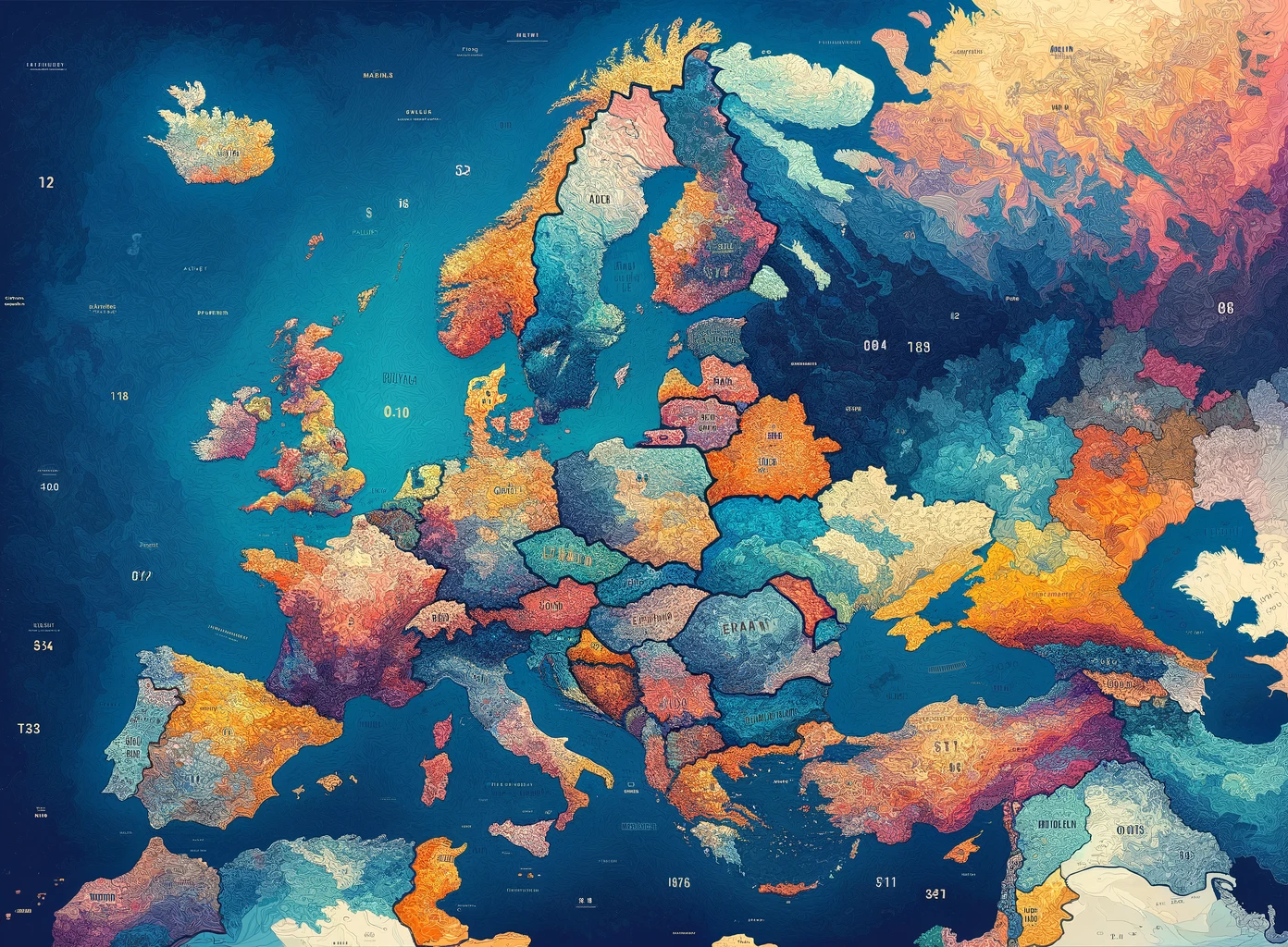The European Innovation Council (EIC) Accelerator, a flagship funding program under the European Union’s Horizon Europe framework, has been a beacon of hope for startups and Small and Medium-Sized Enterprises (SMEs) across Europe. It offers a unique blend of grants and equity financing, providing up to €2.5 million in grant funding and €15 million in equity financing. However, a closer examination of its funding distribution since 2021 reveals a concerning pattern of geographical inequality.
The EIC Accelerator’s Role in Shaping European Innovation
The EIC Accelerator, part of the European Union’s broader initiative to foster innovation and growth among startups and Small- and Medium-Sized Enterprises (SMEs), has been instrumental in bringing groundbreaking ideas to fruition. It aims to support high-risk, high-impact innovations, guiding them from the concept stage (Technology Readiness Level – TRL) through to market maturity.
Geographical Disparities in EIC Accelerator Funding
Since its inception, the EIC Accelerator has been instrumental in fostering innovation and supporting high-potential projects. However, data indicates a skewed distribution of funds favoring certain countries. Nations like France, Germany, and the Netherlands have consistently topped the list of beneficiaries, while countries such as Greece, Slovenia, and Hungary lag behind. This uneven distribution raises questions about the accessibility and fairness of the EIC Accelerator program.
France, Germany, and the Netherlands: Leaders in Innovation Funding
These countries have historically been at the forefront of receiving EIC funding. Their robust innovation ecosystems, coupled with strong government support and an abundance of professional writers, freelancers, and consultants skilled in drafting successful EU grant applications, have played a significant role in this success. Moreover, these countries’ ability to meet the high Technology Readiness Level (TRL) requirements and effectively pitch their projects during the EIC Accelerator interview process have further solidified their position as leaders in securing EIC funding.
Greece, Slovenia, and Hungary: The Struggle for Equal Opportunities
In contrast, countries like Greece, Slovenia, and Hungary have faced challenges in securing an equitable share of EIC funds. Several factors contribute to this disparity. Firstly, the lack of awareness and understanding of the official proposal template and application process can be a significant barrier. Additionally, these countries might not have as many consultants or professional writers specializing in EIC grant applications, hindering their ability to compete effectively.
Ukraine: A Notable Exclusion
Ukraine’s absence from the EIC Accelerator funding landscape is another point of concern. Given the country’s burgeoning startup scene and potential for innovative projects, its exclusion from EIC funding raises questions about the inclusivity and reach of the program.
Addressing the Inequality
To rectify these imbalances, several steps could be taken:
- Enhanced Support and Training: Providing specialized training and resources to potential applicants from underrepresented countries could help level the playing field. This includes workshops on drafting compelling proposals and understanding the nuances of the EIC Accelerator’s evaluation criteria.
- Diversification of Evaluators: Incorporating evaluators from a broader range of geographical backgrounds could reduce inherent biases and ensure a more diverse and equitable selection of projects.
- Targeted Outreach Programs: Implementing outreach programs in countries with lower application rates could stimulate interest and participation in the EIC Accelerator program.
- Increased Transparency: Publicly sharing detailed statistics on the geographical distribution of funds and the evaluation process could enhance the program’s transparency and accountability.
Conclusion
While the EIC Accelerator remains a vital instrument for promoting innovation in Europe, addressing the geographical disparities in its funding distribution is crucial for ensuring a more balanced and equitable landscape. This will not only enhance the credibility of the program but also ensure that innovative ideas from all corners of Europe have an equal opportunity to flourish.

The countries that have been funded under the EIC Accelerator since 2021 can be found here:
- France (80)
- Germany (68)
- Netherlands (52)
- Spain (35)
- United Kingdom (31)
- Israel (29)
- Sweden (25)
- Finland (22)
- Belgium (20)
- Ireland (20)
- Denmark (19)
- Italy (18)
- Norway (13)
- Austria (12)
- Portugal (11)
- Estonia (8)
- Poland (6)
- Bulgaria (3)
- Iceland (3)
- Lithuania (2)
- Czechia (2)
- Romania (2)
- Luxembourg (2)
- Slovakia (1)
- Croatia (1)
- Greece (1)
- Slovenia (1)
- Cyprus (1)
- Hungary (1)
The full list of all EIC Accelerator Beneficiaries since 2021 is available as well.
About
The articles found on Rasph.com reflect the opinions of Rasph or its respective authors and in no way reflect opinions held by the European Commission (EC) or the European Innovation Council (EIC). The provided information aims to share perspectives that are valuable and can potentially inform applicants regarding grant funding schemes such as the EIC Accelerator, EIC Pathfinder, EIC Transition or related programs such as Innovate UK in the United Kingdom or the Small Business Innovation and Research grant (SBIR) in the United States.
The articles can also be a useful resource for other consultancies in the grant space as well as professional grant writers who are hired as freelancers or are part of a Small and Medium-sized Enterprise (SME). The EIC Accelerator is part of Horizon Europe (2021-2027) which has recently replaced the previous framework program Horizon 2020.
This article was written by ChatEIC. ChatEIC is an EIC Accelerator assistant that can advise on the writing of proposals, discuss current trends and create insightful articles on a variety of topics. The articles written by ChatEIC can contain inaccurate or outdated information.
- Contact Us -
EIC Accelerator Articles
All Eligible EIC Accelerator Countries (including the United Kingdom, Switzerland and Ukraine)
Explaining the Resubmission Process for the EIC Accelerator
A Short but Comprehensive Explanation of the EIC Accelerator
The EIC’s One-Stop Shop Funding Framework (Pathfinder, Transition, Accelerator)
Deciding Between EIC Pathfinder, Transition and Accelerator
A Winning Candidate for the EIC Accelerator
The Challenge with EIC Accelerator Open Calls: MedTech Innovations Dominate
Go Fund Yourself: Are EIC Accelerator Equity Investments Necessary? (Presenting Grant+)
Digging Deep: The New DeepTech Focus of the EIC Accelerator and its Funding Bottlenecks
Zombie Innovation: EIC Accelerator Funding for the Living Dead
Smack My Pitch Up: Changing The Evaluation Focus Of The EIC Accelerator
How Deep Is Your Tech? The European Innovation Council Impact Report (EIC Accelerator)
Analyzing A Leaked EIC Accelerator Interview List (Success Rates, Industries, Direct Submissions)
Steering the EIC Accelerator: Lessons Learned from the Pilot Program
Who Should Not Apply To The EIC Accelerator And Why
The Risk of Presenting all Risks in the High-Risk EIC Accelerator Program
How to Prepare an EIC Accelerator Resubmission
How to Prepare a Good EIC Accelerator Application: General Project Advice
How to Craft an EIC Accelerator Rebuttal: Explaining Grant Proposal Resubmissions

